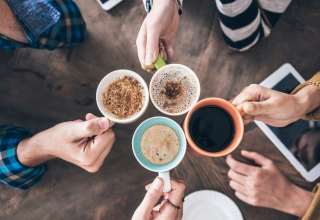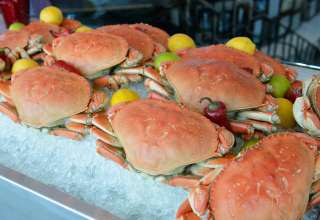What are the best coffee beans in the world? We turn up the heat on the debate
All around the world, coffee is celebrated as one of humanity’s most beloved beverages. However, as with many things in life, not all coffee is made the same – and many aficionados could fight until the cows come home about which type of coffee is the best. So let’s take a look at some popular coffee beans and discuss their characteristics.
The two main types of beans
Firstly, it is important to establish that they are two main types of coffee beans: Arabica and Robusta (or Canephora). It is said that both Arabica and Robusta account for 99% of the world’s supply, while little-known varieties like Baraco, Liberica and Charrieriana make up the remaining share.
Arabica beans dominate around 75% of the market and they were sold for US$3.60 per kilogram in August 2020. Due to popular demand, the price is expected to rise considerably in the near future. Arabica also has a few cultivars, the most popular ones being Bourbon and Typica.
Robusta, on the other hand, are considerably cheaper. The price per kilogram was US$1.30 in July 2020, almost three times cheaper than Arabica.
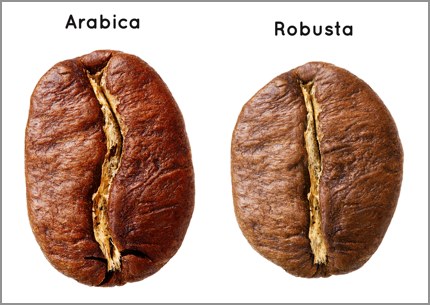
The main differences between Arabica and Robusta are as follows:
- Price: Arabica is more expensive than Robusta.
- Caffeine: Arabica has lower caffeine content.
- Acidity: Arabica tends to have higher acidity than Robusta.
- Growth: Arabica thrives in higher altitudes, while Robusta is hardy and grows at a lower altitude.
- Harvest: Arabica takes four years to produce berries while Robusta takes around two years.
Whether you prefer Arabica or Robusta, that will be down to your taste, as their flavour is determined by factors such as where they are grown (country and altitude), and how they are being processed and prepared. So let’s move to discuss some of the world’s best coffee beans for both new and old coffee lovers.
The novice: Brazilian Santos coffee beans
For those who are new to the world of coffee, or new to grounding their own coffee beans, Brazilian Santos coffee beans are a great starting point.
Brazil is the world’s leading coffee exporter and Santos, in southeastern Brazil, is the biggest container port in Brazil and also the whole of South America. Santos handles about 40 millions of tonnes of coffee beans each year, which is why the city is synonymous with traditional Brazilian coffee beans.
Beware that Brazilian Santos refers to a regional style, not a variety or cultivar of coffee. In fact, Santos can be Bourbon (a cultivar of Arabica) or Robusta, if they are from the state of Espírito Santo which primarily grows Robusta beans.
The style of Santos is lightly-roasted with a smooth texture. It works well with those who like adding sugar and milk to their coffee.
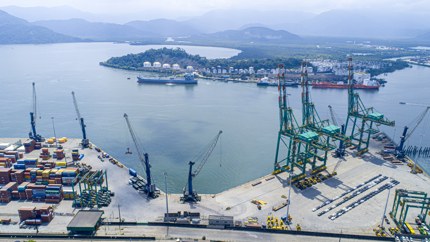
The all-rounder: Java coffee beans
Like Santos, Java refers to the regional style of coffee found on the island of Java, Indonesia. The Java beans are in fact produced by an interspecific hybrid grown exceptionally well on rich volcanic soils.
Java beans have a long history which can trace back to the time when modern-day Indonesia was occupied by the Dutch East India Company. While not the earliest coffee producing area (that honour belongs to Mocha in Yemen), West Java was home to some of the earliest coffee plantations in the late 17-century.
When it comes to processing Java beans, farmers rely on the wet method – soaking the beans in water first, before fermenting and drying them. Java beans tend to be full-bodied and packed full of flavour. They are also low in acid and not too earthy, perfect for coffee drinkers who are still exploring their preferences.
We highly recommend Taylors of Harrogate Indonesia Java Jember Single Origin Coffee Beans. Selling at £13.99 per kg, they are slightly cheaper than other single-origin beans from other countries, yet they are undoubtedly one of our top favourites.
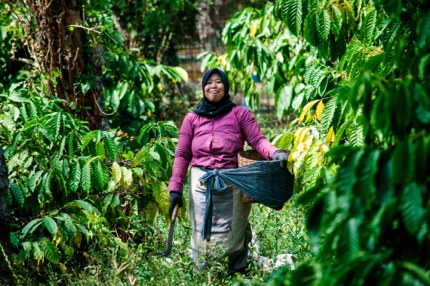
The original: Ethiopian coffee beans
It’s said that coffee was first discovered in the region of Kaffa in southeast Ethiopia, a claim that is subject to many debates. You can, however, get high-quality Ethiopian coffee beans at affordable prices, a winning combination for coffee lovers. Sidamo is the most famous coffee-growing region in Ethiopia. Here, small plantations cultivate Arabica at elevations from 1,500 to 2,200m above sea level. Generally, Ethiopian coffee beans tend to be rich with bright acidity and a fruity, wine-like kick.
If you’d like to get some Sidamo whole beans, check out these Coffee Masters Single Origin beans from Amazon. It is sold for £16.99 per kg. Alternatively, if you just want a quick cup of well-balanced Etiopia coffee without grinding beans, get the Happy Belly Ground Coffee from Amazon. It is sold for a reasonable £9.99 per kg.
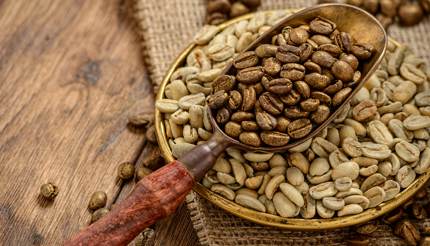
Silky smooth: Kona coffee beans
Hailed as the connoisseur’s choice, Kona coffee beans are grown only in the Kona district of Hawaii’s Big Island. The narrow belt of coastal land is favoured with rich, volcanic soil, while the sloping terrain is nourished by a unique microclimate of sun and rain in equal measure. The beans grown in these conditions produce coffee with a mellow, smooth but robust flavour profile.
Just like champagne, the growers guard the brand jealously, and only beans produced in the district can bear the Kona name. Even so, many others ride on the reputation of Kona coffee with misleading names like ‘Hawaiian grown’ or ‘Kona blend’ which contains no more than 10% of the real thing. Don’t settle for the fake, get the 100% Kona Gold Coffee Whole Beans from Kona Rum Co. It is sold for a whopping £114.57 per kg, many more times than the Java and Ethiopian beans we’ve recommended above, but it is worth it in our opinion.
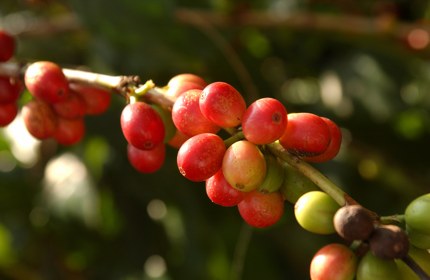
In the eye of the beholder
There are so many different types of coffee beans – even our above suggestions are themselves populated by various sub-categories that offer different tastes, smells and textures based on production processes and location. Because of that, it’s always good to remember that – other than our own personal favourites – there is no objectively ‘best’ cup of coffee. So try different coffees, relax and let go of your predispositions. Coffee is to be enjoyed, not argued over.
Updated in September 2020.






